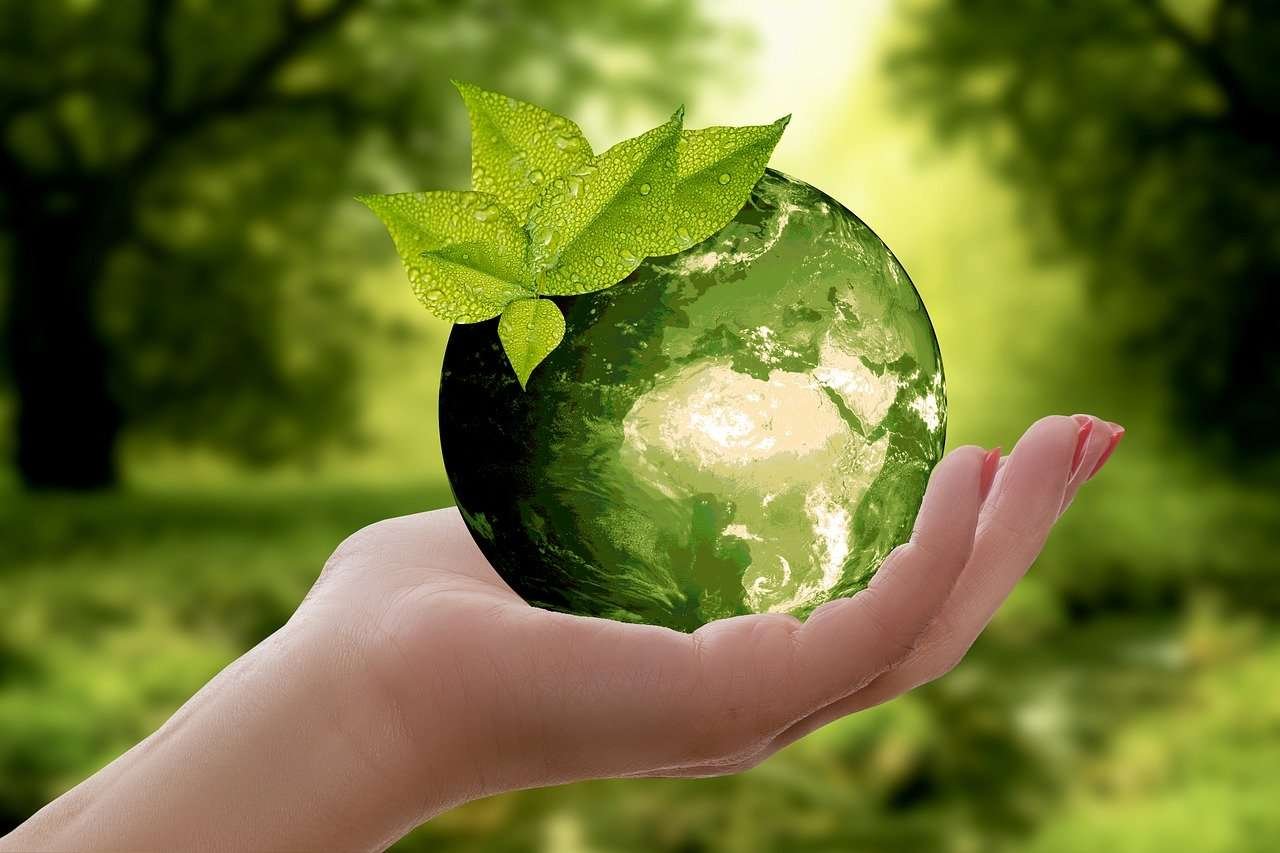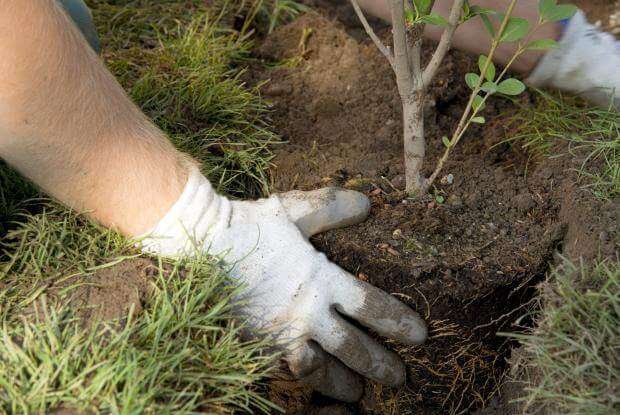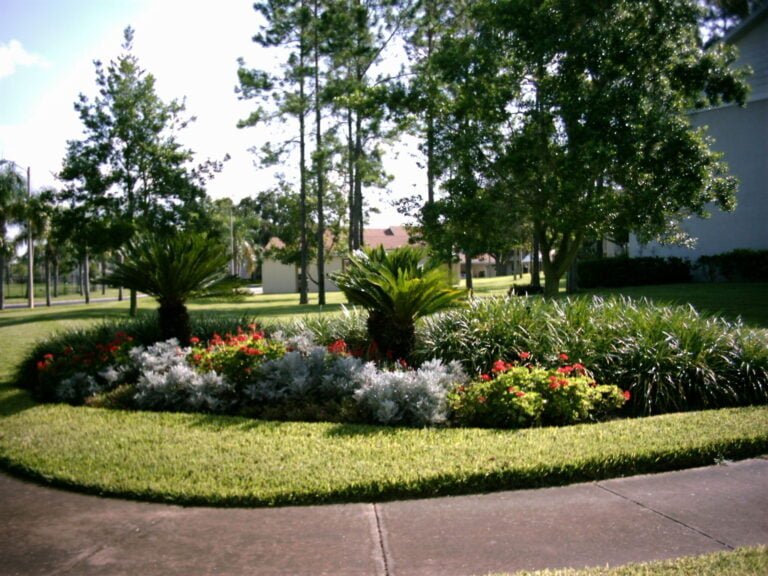Landscaping For The Environment

Landscaping for the environment features the landscape can be beneficial for the environment and is a way we can do our part in protecting our natural habitat.
It is applying certain environmental-friendly practices, principles, and concepts in a landscape, which help maintain our ecosystem. When using environmental conscience practices during maintenance, and having environmental features in a landscape, landscaping can be beneficial for the environment. Landscaping for the environment is a way we can do our part in protecting our natural habitat.
Some of these principles are a small part of the Florida-Friendly yard landscape concept. However, they can also be part of any landscape type or style. The principles in this article should be common practices that everyone should follow, regardless of what type of landscape one has.
Landscaping for the environment categories.
Landscaping for the environment is broken down into two categories,
- Design & Installation Procedures
- Proper Maintenance Practices
The first category Design and Installation Procedures pertains to environmentally friendly design concepts and principles, to follow for installing features and plant materials in landscapes.
The second category Proper Maintenance Practices pertains to environmental conscience practices, applied when maintaining a landscape.
Design and Installation Procedures
Follow the “Right Plant, Right Place” concept
What this means is to plant types of plants with the same light and water requirements, as the light and water conditions of the planting site location. Areas in a landscape differ in the amount of sunlight and water they receive. Plants in the wrong location tend to be more stressed, thus having many problems.
Plants that are stressed from lack of water are more susceptible to insect problems, which increases the usage of pesticide chemicals. In areas that stay dry, install water-conserving plants.
They don’t need as much water after being fully established and handle drought better. Plants installed in the right locations will reach their optimum growth and stay healthy longer. This concept helps the environment, through better water management and pest management.
Have low-maintenance shrubs
Install shrubs that require fewer fertilizer applications and are less prone to insects. This reduces the number of chemicals in the environment. Low- maintenance shrubs need less trimming for appearance, thus reducing yard waste from branches and leaves.
Have a Rain Garden to capture stormwater runoff
Locate a rain garden in areas that are low in the yard. Water from heavy rains tends to drain to low areas in a landscape. Install plants in the garden that can handle being wet, to avoid water being wasted from runoff. If possible build a drainage swale from the downspout of a building to the garden. A rain garden helps control stormwater runoff.
Create plant buffers to protect water bodies
By having plant buffers along the edges of lakes, ponds, and rivers, stormwater runoff can be trapped and filtered before entering them. Low-growing plants with a wide base and dense roots, like grasses, should be installed. They are the best for blocking water flow, filtration, and taking up water. Grasses do not need fertilizer keeping chemicals away from the water. Plant buffers keep unwanted pollutants from washing into water bodies.
Have a maintenance-free zone around bodies of water
These zones should be within 10 ft. of lakes, ponds, and rivers. No fertilizers and pesticides should be applied in this area. Grass clippings need to stay 10 ft. away from bodies of water. Grass clippings can have chemicals from lawn spraying on it, and if they wind up in the water so do the chemicals. These practices will help reduce water pollution.
Have lawn areas that are practical
Lawn areas should be in a simple shape. Areas for play space or entertainment should be no larger than necessary. Between sidewalks and plants, beds have lawn areas to hold and filter stormwater runoff and to keep mulch from washing onto sidewalks. Do Not make a lawn area so small that it is difficult to irrigate or fertilize. Water and fertilizer wind up going in areas not needed like sidewalks, driveways, and the street. Small lawn areas cause wasting of water from irrigation, and chemicals end up in storm drains.
Proper Maintenance Practices
Keep yard waste and chemicals out of storm drains
Storm drains are not connected to the sewer system, they flow directly into rivers, lakes, ponds, and bays. Grass clippings and granular fertilizers that stay on sidewalks, driveways, and in the street, eventually get into storm drains. Then when it rains heavily they get washed into these bodies of water, causing water pollution. It is important to immediately blow or sweep them back onto the lawn to prevent this from happening.
The irrigation system should be water-conserving
In bedding plant areas use micro-irrigation systems such as micro-head sprays or drip tubing. These devices use a low volume of water output and allow the water to be concentrated around the root zone. This way plants absorb water better and make watering more efficient. For lawns, control watering by making sure water is uniformly applied for proper coverage. Periodically check heads to see if they are working properly. They can become clogged, damaged, or need to be replaced. Check to see if heads are out of adjustment or off center. Check to see if any of the lines are leaking. Periodic maintenance keeps irrigation systems working properly, thus conserving water.
Use mulch Properly in beds and around shrubs
Mulch is used for more than just appearance purposes. Mulch helps suppress weeds, resulting in less weed control from chemicals. Mulch helps retain moisture, which conserves water from less irrigation. Mulch prevents soil erosion, which leads to more stormwater runoff. Mulch needs to be applied no more than 3 inches deep to serve its purpose, this avoids some of it being washed away during heavy rain. Apply mulch after planting, and when it has broken down no longer provides coverage.
Have a compost bin for yard waste
Use a compost bin for yard waste, such as leaves, lawn clippings, shredded branches, and wood chips. You can add kitchen waste to the compost bin. The organic material derived from a compost bin can be used for plant beds. This is more environmentally friendly than using synthetic fertilizers.
Conclusion
Principles and concepts should be common practice, among homeowners and professional landscapers alike. Implementing the features in design and installation makes a landscape environmentally friendly. Applying the proper maintenance practices helps with protecting our ecosystem. Let’s all be environmentally conscience when doing our landscaping. Do this so we can preserve our natural habitat, for us and future generations.



Kurt,
I really enjoyed your article and I think we’ve been in the landscaping business for almost the same amount of time. I found this September to be extremely challenging due to all of the rainfall that we received in the Naples Florida area. Just working a full week in the landscaping business in southwest Florida last month was quite difficult. I wanted to invite you to visit our new websites at http://landscapingnaples.com as well as http://landscapingftmyers.com. Please feel free to leave any comments that you may have on the Naples Florida blog website I’m always interested in hearing new viewpoints and ideas.
Larry
Larry,
I know what you mean about all the rainfall in Florida this summer. It has been the same in my area as in yours. Many landscaping companies have been trying to work around the rain, in order to service their customers. It has been especially difficult for lawn spraying companies.
It is always nice to receive comments from someone with the same experience in Florida landscaping. When I was a garden center manager some years ago, a few of my vendors that I would order plants from, were located in Naples. Perhaps you might get plants from one of them.
I would enjoy leaving comments on your blog as I have already looked at it. I like the work you have done as seen in your pictures. I will gladly offer any viewpoints and ideas that I can offer.
Keep up the good work and Keep On Growing!
Kurt